Entering the code operates a small relay. Build the circuit yourself using cheap off-the-shelf components. Although it was designed to control a Burglar Alarm - it has many other uses.
There is both a Four-Digit and a Five-Digit version of this switch. Although they will have other applications - both are designed to control the Modular Burglar Alarm circuit. Simply use the relay's changeover contacts in place of SW1. The poles and the points marked 'set' and 'off' represent the corresponding connections on both the keypad relay and the alarm switch. Click Here for a Diagram.
Circuit Description
|
|---|
 |
|
|---|
There is nothing special about the transistors. Any small NPN transistors with a gain (hfe) greater than 100 and an IC(max) of at least 100mA should do. But remember that the pin configuration of your transistors may be different from that of the BC547. Just because it looks like a BC547 - do not assume that it has the same pin configuration.
Parts List
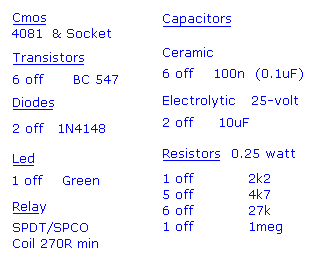
Construction
Click here if you're new to constructing stripboard projects.
The terminals are a good set of reference points. To fit them, you may need to enlarge the holes slightly. Then turn the board over and use a felt-tip pen to mark the 28 places where the tracks are to be cut. Before you cut the tracks, use the "actual size" drawing to Check That The Pattern is Correctly Marked .
When you're satisfied that the pattern is right - cut the tracks. Make sure that the copper is cut all the way through. Sometimes a small strand of copper remains at the side of the cut - and this will cause malfunction. Use a magnifying glass - and backlight the board. It only takes the smallest strand of copper to cause a problem. If you don't have the proper track-cutting tool - a 6 to 8mm drill-bit will do. Just use the drill-bit as a hand tool - there's no need for a drilling machine.
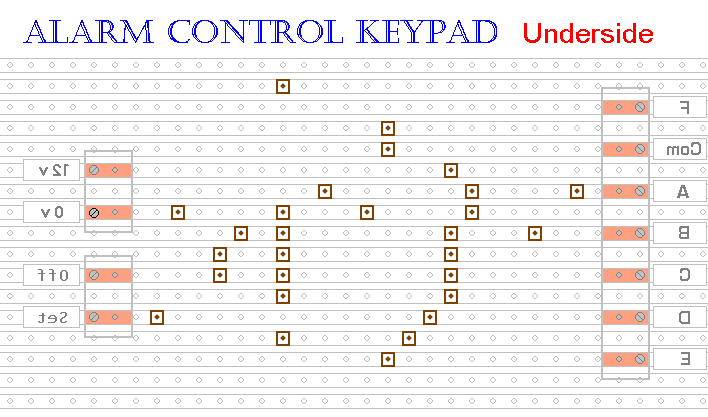
Actual Size Of Pattern
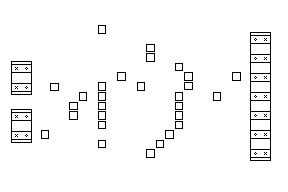
Next make and fit the Thirteen Wire Links. I used bare copper wire on the component side of the board. Telephone cable is suitable - the single stranded variety used indoors to wire telephone sockets. Stretching the core slightly will straighten it - and also allow the insulation to slip off.
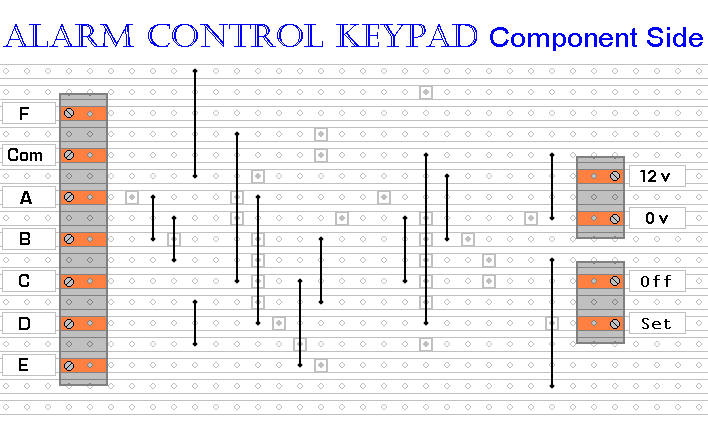
The next stage is to fit the 13 resistors - the 8 capacitors - and the IC socket. Using a socket reduces the chances of damaging the IC - and makes it easier to replace if necessary. Pay particular attention to the orientation of the two electrolytic capacitors. The resistors are all shown lying flat on the board. However - those connected between close or adjacent tracks - are mounted standing upright.
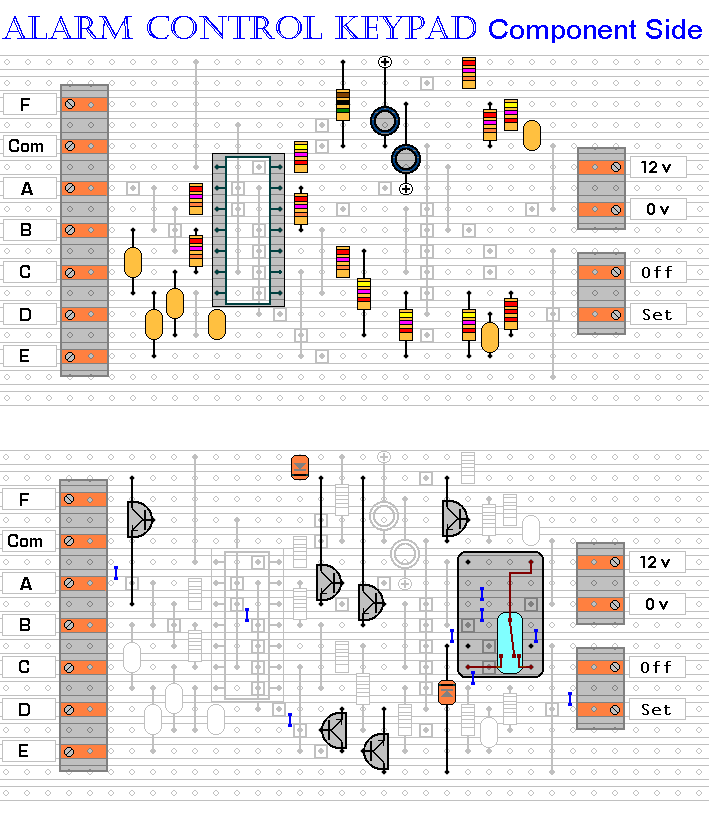
Next fit the transistors - diodes - and relay. Pay particular attention to the orientation of the transistors and diodes. Again - D1 is shown lying flat on the board - but it's actually mounted standing upright.
Finally - examine the underside of the board carefully - to make sure that there are no unwanted solder bridges or other connections between the tracks. Again - if you backlight the board - it makes potential problem areas easier to spot.
When you're satisfied that everything is in order - add the 9 solder bridges to the underside of the board. Pay particular attention to the bridge that joins pins 4 & 12 of the IC. When positioning the bridges - it may help to make a copy of the above drawing - and flip it left to right.
Finish off by inserting the Cmos 4081 into the socket. Pin 1 of the IC should be in the top left-hand corner. Check that all 14 pins have entered the socket. Sometimes - instead of entering the socket - a pin will curl up under the IC.
You're Now Ready To Test Your Circuit
Keypad Layout
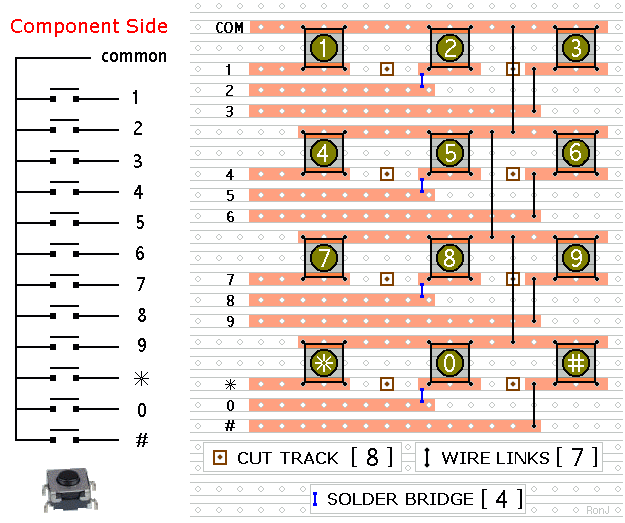
General Information
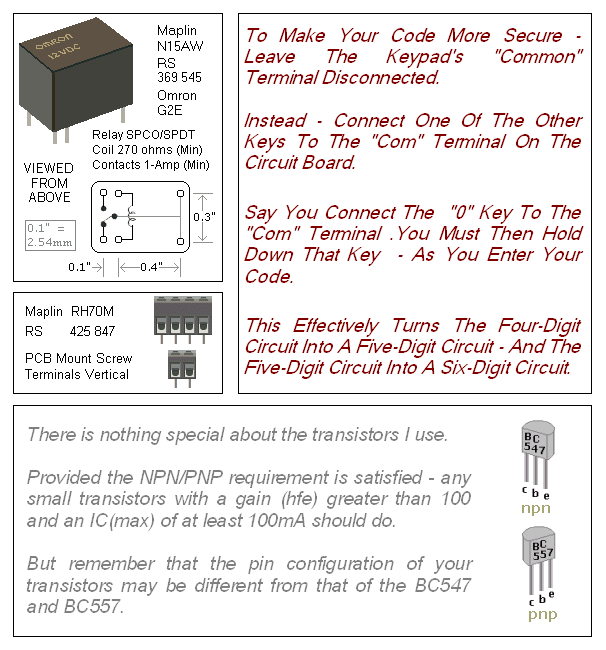
 SUGGESTIONS
SUGGESTIONS
 SUGGESTIONS
SUGGESTIONS







